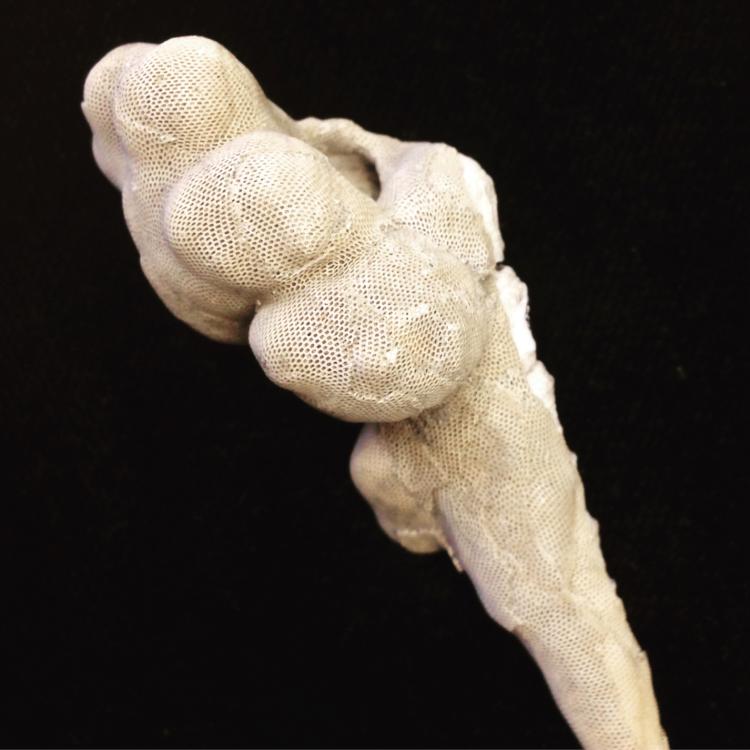The CU Museum is closed until January 8, 2026.
During this time, collection visits will be available by appointment and other special access requests will be considered on a case-by-case basis.
Please email cumuseum@colorado.edu for more information.
Bryozoan

These small animals are referred to as zooids, each an individual unit of a functioning colony. In life, each zooid has a soft-tissue body, called a polypide, terminating with a crown of cilia-covered tentacles, called a lophophore. These tentacles act as filters, capturing microorganisms in the water to sustain the entire colony. As most bryozoans are sessile, the ability to filter feed allows them to increase the health of aquatic ecosystems by simply sieving plankton from the water1.
Encrusting bryozoans are not just fun to look at under a microscope, they are also important to consider from an ecological perspective. One of the most well-known modern taxa of encrusting bryozoan is actually a highly invasive species along the eastern seaboard of the United States, called Membranipora membranacea. This species typically grows over blades of kelp in its native Salish sea, where its population is kept in check by a nudibranch with special camouflage coloration (which helps it avoid predators of its own!) that crawls along the surface of encrusted colonies, eating zooids as it moves. Hitching rides on the hulls of ships, M. membranacea has made its way into ecosystems where there are no such predators2. Their populations in these areas have thus spiraled out of control, interfering with the growth of kelp fronds by covering entire blades and causing them to become fragile and eventually break.
In their native habitats, encrusting bryozoans don’t typically harm the organisms they use as growing surfaces, either because they are eaten by predators before growing in excess or they grow over substrates that don’t need access to sunlight in order to survive, like kelp does. However, when introduced into environments without predators, encrusting bryozoans can easily go from being the cute colony you see in this picture to an uncontrollable ecological danger. The prevalence of invasive species in various ecosystems across the world has been increasing since the advent of global travel—the importance of raising awareness of invasive species and the dangers they pose to healthy ecosystems cannot be overstated!
The information for this week's WoW was compiled by Sarah Leventhal, a PhD candidate in Geosciences, working with Carl Simpson, Curator of Invertebrate Paleontology. She is studying the evolutionary history of modular marine invertebrates—specifically cheilostome bryozoans. Graduate students offer important contributions to the CU Museum while working side-by-side with researchers in their field and museum curators.
Uncataloged turritellid gastropod encrusted by a bryozoan (from CUMNH-Invertebrate Paleontology Collection)
Age: Pleistocene
Collector: Mary Ellen Benson
1. https://www.sciencedirect.com/topics/earth-and-planetary-sciences/bryozoan
2. https://invasions.si.edu/nemesis/browseDB/SpeciesSummary.jsp?TSN=155824

